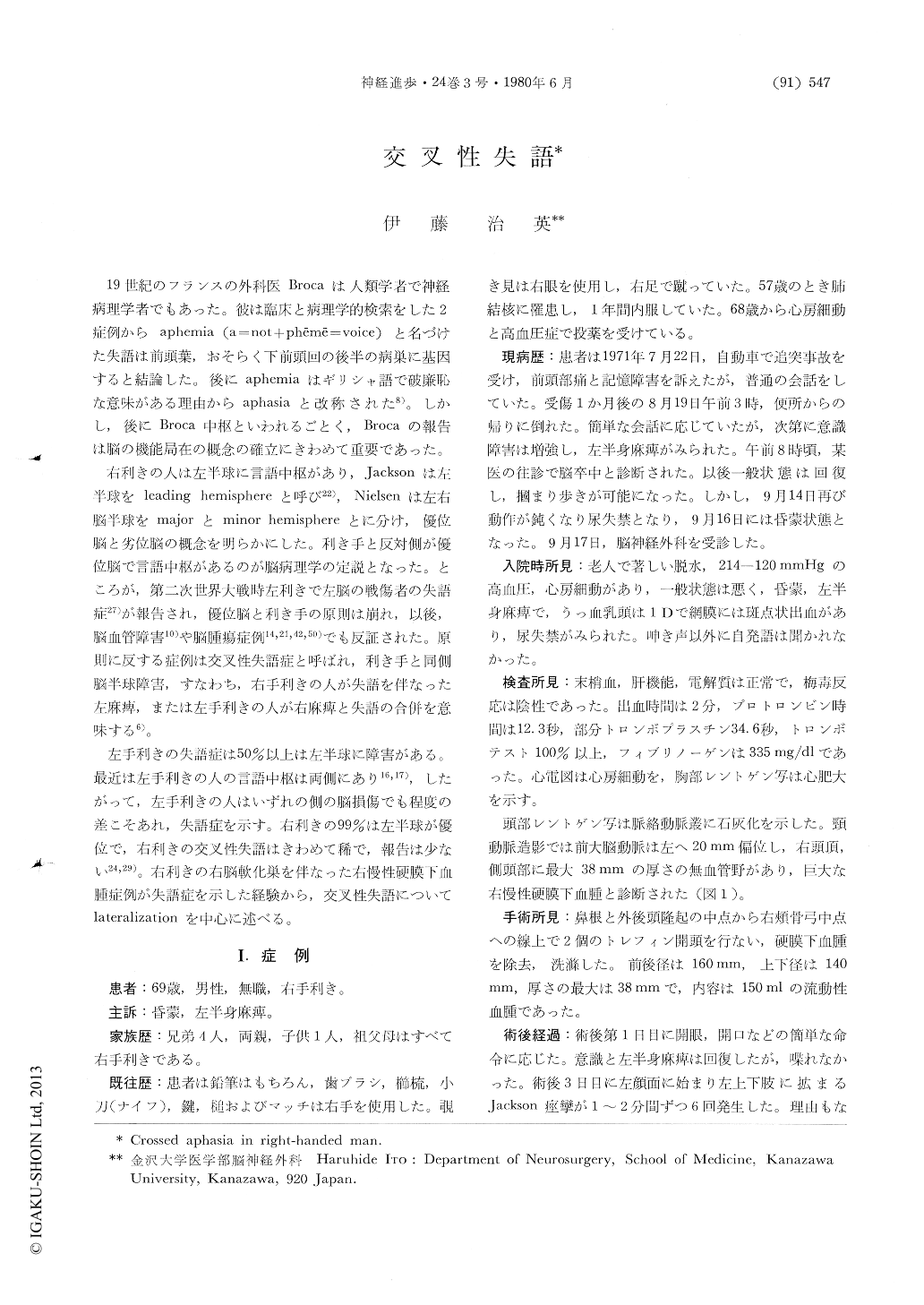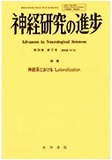Japanese
English
- 有料閲覧
- Abstract 文献概要
- 1ページ目 Look Inside
19世紀のフランスの外科医Brocaは人類学者で神経病理学者でもあった。彼は臨床と病理学的検索をした2症例からaphemia(a=not+pheme=voice)と名づけた失語は前頭葉,おそらく下前頭回の後半の病巣に基因すると結論した。後にaphemiaはギリシャ語で破廉恥な意味がある理由からaphasiaと改称された8)。しかし,後にBroca中枢といわれるごとく,Brocaの報告は脳の機能局在の概念の確立にきわめて重要であった。
右利きの人は左半球に言語中枢があり,Jacksonは左半球をleading hemisphereと呼び22),Nielsenは左右脳半球をmajorとminor hemisphereとに分け,優位脳と劣位脳の概念を明らかにした。利き手と反対側が優位脳で言語中枢があるのが脳病理学の定説となった。ところが,第二次世界大戦時左利きで左脳の戦傷者の失語症27)が報告され,優位脳と利き手の原則は崩れ,以後,脳血管障害10)や脳腫瘍症例14,21,42,50)でも反証された。原則に反する症例は交叉性失語症と呼ばれ,利き手と同側脳半球障害,すなわち,右手利きの人が失語を伴なった左麻痺,または左手利きの人が右麻痺と失語の合併を意味する6)。
The case is reported of a right-handed patient, aged sixty-nine years, who showed the motor aphasia after the operation of the right chronic subdural hematoma. The patient has been righthanded from the childhood without hereditary tendency of left-handedness. The patient died of panperitonitis due to the perforation of sigmoid colon. The cause of the perforation couldn't be determined. An autopsy disclosed the softening of the inferior part of pre- and post-central gyrus in the right hemisphere, while there was not any pathological change in the left hemisphere except for small softening in the lentiforme nucleus.

Copyright © 1980, Igaku-Shoin Ltd. All rights reserved.


